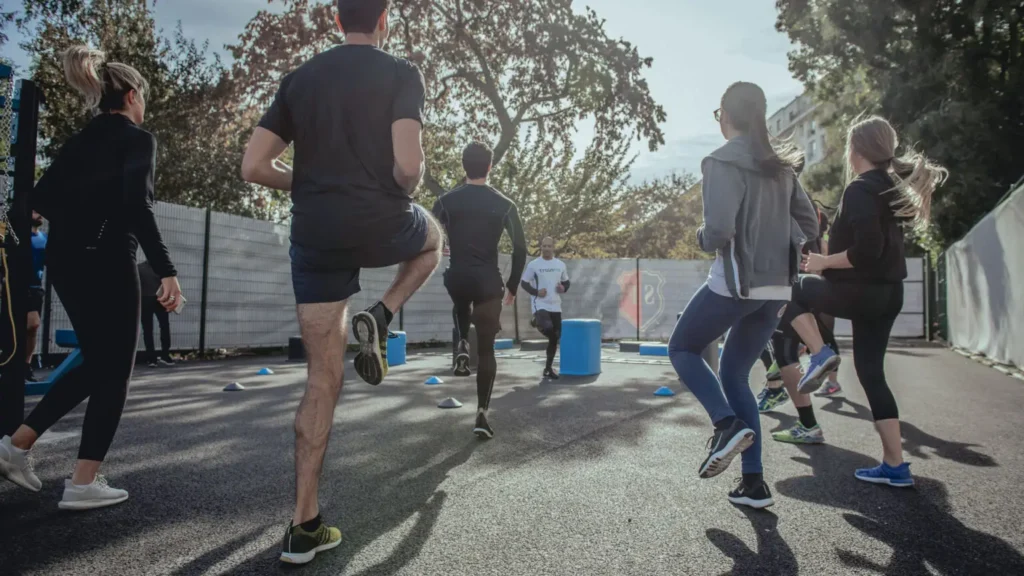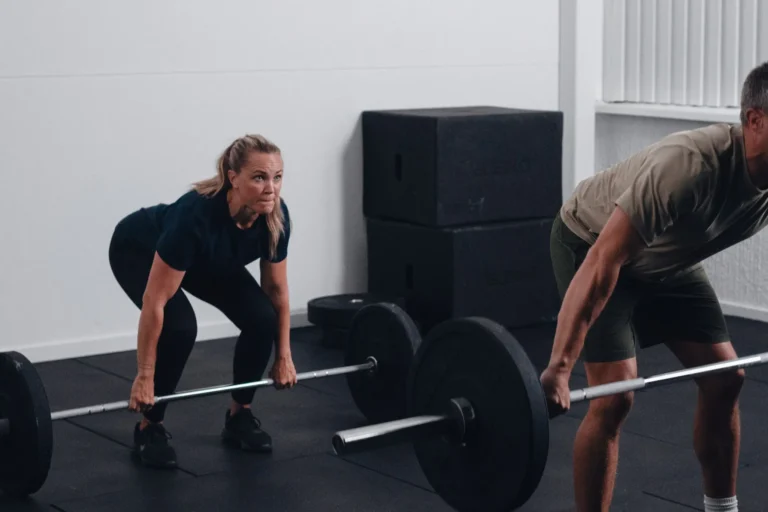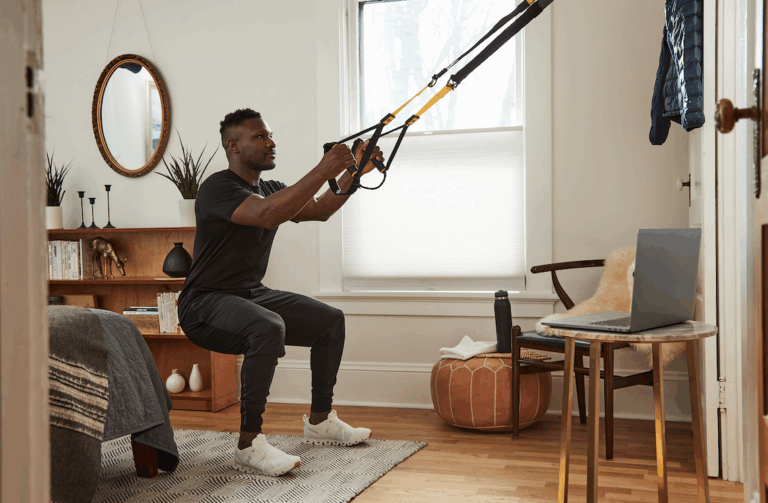The Power of Strength Training for a Longer, Healthier Life

Aging is a natural process, but our lifestyle choices greatly influence how we age.
While aerobic exercise has long been linked with longevity, growing research emphasizes the importance of strength training in maintaining vitality, independence, and overall well⎯being.
Strength training goes beyond just building muscle—it helps preserve metabolic health, supports cognitive function, and enhances bone strength, all of which contribute to a longer, healthier life.
In this article, we’ll explore the science⎯backed benefits of strength training for longevity, share practical ways to incorporate it into your routine.
Strength Training: Your Secret Weapon for Longevity
We all know that exercise is good for us, but strength training often gets overlooked. It’s not just about building a nice aesthetic (though that’s a nice perk!). Studies have consistently shown that individuals who engage in regular strength training experience increased lifespan and a greater number of healthy, active years.
Also known as resistance training, strength training is a powerful tool for improving your health and well⎯being at any age, contributing to a longer, healthier, and more vibrant life. It involves exercises that challenge muscles through weights, resistance bands, or body weight.
1. Preserve Muscle Mass and Boost Metabolism

One of the biggest challenges of aging is the natural loss of muscle mass, a process called sarcopenia. This can lead to weakness, reduced mobility, and a higher risk of falls.
Research indicates that adults lose 3% to 8% of their muscle mass per decade after age 30. The good news is that strength training offers an effective antidote! It helps counteract muscle loss by stimulating muscle growth and maintaining functional strength, keeping you strong and active for longer.
In addition, having more muscle mass boosts metabolism. A higher muscle⎯to⎯fat ratio enhances resting metabolic rate (RMR), making it easier to maintain a healthy weight and reduce the risk of metabolic diseases like type 2 diabetes.
Studies found that individuals with higher muscle mass had a significantly lower risk of metabolic syndrome. Consider including exercises like squats, lunges, rows, and presses in your routine to target major muscle groups and preserve your strength.
2. Strengthen Bones and Prevent Fractures

Osteoporosis is a condition that weakens bones and increases fracture risk. It becomes more prevalent as we age, affecting millions of aging adults, particularly postmenopausal women.
Strength training provides a crucial defense against this. Weight⎯bearing exercises stimulate bone⎯forming cells, increasing bone density and reducing the risk of fractures. Think of it as investing in your skeletal future!
One study looking at the Role of High⎯intensity and High⎯impact Exercises in Improving Bone Health in Postmenopausal Women found that postmenopausal women who engaged in high⎯intensity resistance training experienced significant improvements in bone density.
Exercises like squats, lunges, deadlifts, and exercises using resistance bands or weight machines are excellent choices for building bone strength. Even bodyweight exercises like push⎯ups and planks can be beneficial.
3. Enhance Cognitive Function and Mental Well⎯Being

The benefits of strength training extend beyond physical health—it also supports brain function. Resistance training can improve memory, executive function, and overall cognitive performance.
Additionally, resistance training is linked to reduced symptoms of depression and anxiety due to its positive effects on mood⎯regulating neurotransmitters. More broadly, exercise is known to release endorphins, which are “feel⎯good” chemicals that can improve your mood and reduce stress.
4. Regulate Blood Sugar and Support Heart Health

An increased risk of insulin resistance and cardiovascular disease often accompanies aging. Strength training improves insulin sensitivity by enhancing glucose uptake in muscles, helping to regulate blood sugar levels and reduce the risk of type 2 diabetes.
The study from Nutrition & Metabolism showed that a 16⎯week strength training program improved key biochemical markers associated with whole⎯body insulin sensitivity.
Resistance training can lower HOMA⎯IR, boost adiponectin levels, and reduce both free fatty acids and C⎯reactive protein, all of which contribute to better metabolic health.
While more studies are needed to fully understand these effects, the evidence supports strength training as a powerful tool for improving insulin regulation and should be considered as part of a comprehensive approach for individuals at risk of diabetes.
A 2024 publication from the American Health Association also showed strength training improves heart health by lowering blood pressure and promoting healthier cholesterol levels.
5. Reduce Fall Risk and Enhance Mobility

Falls are one of the leading causes of injury in older adults, often resulting in serious complications. Strength training enhances balance, coordination, and reaction time, significantly lowering fall risk.
Building leg and core strength through exercises like step⎯ups, deadlifts, core strengthening exercises, and single⎯leg movements can significantly improve stability and mobility.
6. Reduce Chronic Inflammation and Strengthen Immunity
Chronic inflammation is a major contributor to age⎯related diseases such as arthritis, cardiovascular disease, and cognitive decline. Strength training reduces inflammatory markers while promoting the release of anti⎯inflammatory molecules. Additionally, a stronger body leads to a more robust immune system, helping you fight off infections more effectively.
How to Incorporate Strength Training Into Your Routine
You don’t need a gym membership to reap the benefits of strength training. Here are simple ways to integrate it into your lifestyle:
- Start with bodyweight movements: Exercises like squats, push⎯ups, lunges, and planks are great starting points.
- Gradually increase resistance: Incorporate dumbbells, kettlebells, or resistance bands as you progress.
- Focus on full⎯body workouts: Compound movements like deadlifts, shoulder presses, and rows work multiple muscle groups at once.
- Prioritize proper form: Ensuring correct technique prevents injury and maximizes effectiveness.
- Train at least twice per week: The CDC recommends a minimum of two strength training sessions per week for optimal health benefits.
Conclusion
Strength training is one of the most effective ways to enhance longevity, improve physical and mental well⎯being, and ensure a high quality of life.
By preserving muscle mass, supporting bone health, reducing inflammation, and improving metabolic function, resistance training offers lifelong benefits that go beyond aesthetics.
As we prepare to showcase our latest strength training equipment at FIBO, we invite you to explore how our new solutions can support your members’ journeys to longer, healthier lives.
Source: https://www.intenzafitness.com/health-lifestyle/the-power-of-strength-training-for-a-longer-healthier-life/









